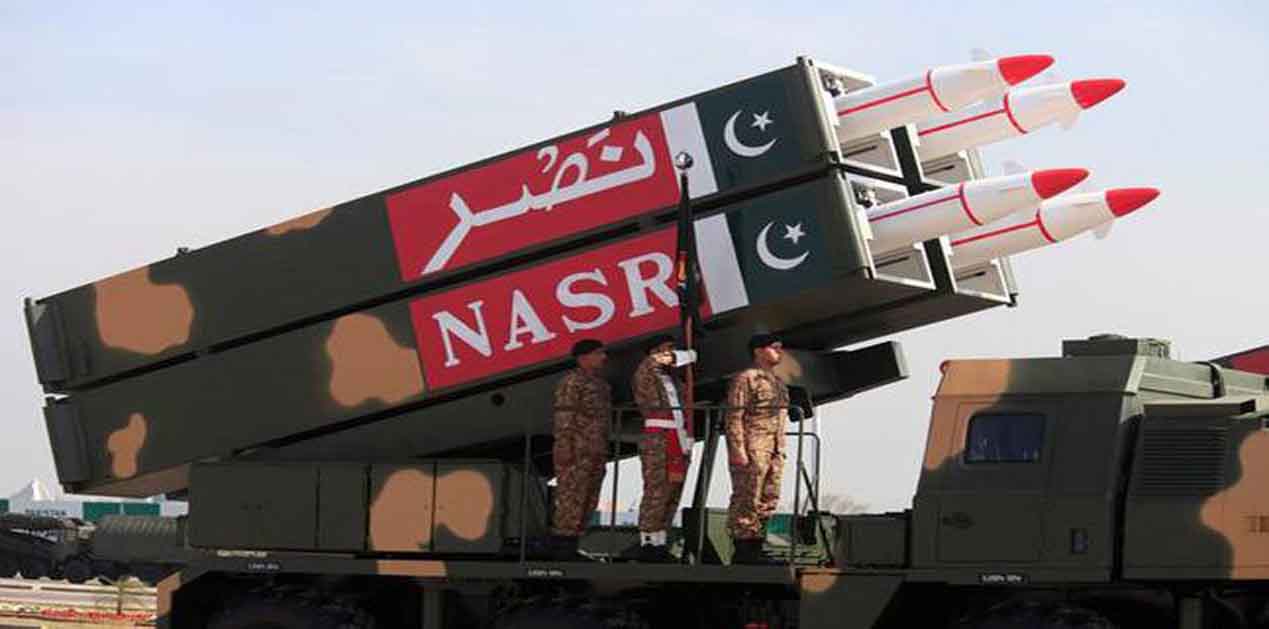Current Perspective
14 February 2019 was a clear day for movement of vehicles on the Jammu-Srinagar highway. It was after a long spell of road closure that the highway was opened. Viewing the frequent road closures, there was a need to move troops back into the Valley from Jammu. Militant in a car loaded with explosives from the terror outfit Jaish-e-Mohammed attacked a bus forming a part of the Central Reserve Police Force (CRPF) convoy. The resultant explosion led to 40 personnel being martyred and some were critically wounded.
The dastardly attack shook the entire world and rightfully all investigations led to the active support provided by Pakistan. India correctly decided to attack the Jaish-e-Mohammed training facility in Balakot which is located in Khyber Pakhtunwa province in Pakistan. The attack was undertaken by a group of Indian Air Force Mirage-2000 aircraft at about 0330 hours on 26 February 2019. The strikes were pre-emptive and targeted a terrorist training centre about 80 km West of the Line of Control (LC). This air strike was the first launched after the 1971 war. It is reported there were about 12 Mirage-2000 supported by four Sukhoi 30 MKI, Netra and Phalcon Airborne Early Warning and Control Aircraft, a Heron UAV and two Ilyushin IL-78 aerial refuelling aircraft. There were also four aircraft used as decoys which flew from Jodhpur to Barmer onwards to Bahawalpur to draw the attention of Pakistan Air Force to the South. The Mirages used Spice-2000 Precision Guided Munition which is fed with target data and has the capability to be guided by satellite as also Electro Optics. By all accounts the targets were decimated causing huge casualties.
Pakistan responded by despatching its Air Force on the morning of 27 February 2019. The response was in three groups. All of them were in the area Mendhar-Bhimbar Gali-Jhangar–Naoshera. The Northern-most group was JF -17 and the two groups to the South were F-16. To meet the challenge the Indian Air Force scrambled Sukhoi-30 MKI, Mirage-2000 and Mig-21 Bison. The F-16 fired an AMRAM missile which was deflected by our aircraft. Wing Commander Abhinandan locked on to an F-16 and shot it with an R-73 Air to Air Missile. Wing Commander Abhinandan’s aircraft was also shot down and he ejected safely. Diplomatic pressures compelled Pakistan to return the Wing Commander safely. Overall, India had explicitly signalled its intentions to Pakistan of its capability to hit back effectively. By the way, Pakistan did not threaten to use nuclear weapons at any stage. Not once was a mention made of Pak’s Tactical Nuclear Weapons (TNW) or the famous ‘Red Lines’ of General Khalid Kidwai who at a point of time was the Director General of the Strategic Plans Division of Pakistan.
It would be pertinent to move back the clock to 2016 during the ‘surgical strikes’. The Indian Army needs to be complimented for undertaking precise surgical strikes at multiple locations across the LC on the night of 28 and 29 September. Though Pakistan denied the event and went to the extent of taking press correspondents to the LC to state that nothing had occurred, radio leaks from Pakistan proved otherwise. The operations were executed with surprise and a number of Pakistani militants were killed. Pakistan awakened its sleeper cells and undertook sporadic attacks. This was followed by an attack in the area of Pampore which commenced on 10 October and the terrorists held out for three days despite heavy firing. While India did its best to restrain further escalation, the terrorists under guidance from Pakistan gave no respite. Further there were intermittent Cease Fire violations across the LC which were responded without escalation.
It is a matter of India’s patience as to how long the situation would continue. India is determined to break the terrorist infrastructure in Pakistan. Diplomatically, this has not produced results, and therefore the military option to destroy these camps by air power, missile power, artillery, special forces and manoeuvre need to be considered. What then would be the reaction from Pakistan? Will they use the TNW?
Pakistan’s TNW
Post the Uri and Balakot clash, the Pakistani Prime Minister mentioned that both countries have nuclear weapons. However there was no mention of Pakistan unilaterally utilising these. Further, no mention was made of the TNW or the Red lines. A degree of caution can be seen in all Pakistani official statements. This definitely leads us to the issue regarding the effectiveness of Pakistani TNW ‘Nasr’.
It is essential we understand Nasr, the TNW that Pakistan possesses. Nasr is stated to have a range of 60 km and had undergone its first flight test on 19 April 2011. The launch system is similar to artillery rocket systems. It is believed to be derived from the Ws-2 Weishi Rockets system developed by China’s Sichuan Aerospace Corporation. Four missiles can be carried on the Chinese origin Transport Erector Launcher. The warhead section has been estimated to have a cylindrical section which is 361 mm in diameter, 940 mm long with a conical portion which is 660 mm long. The first question is whether the warhead has been miniaturised successfully for the Nasr. There is no scientific proof that this has been completed. Accordingly, the weapon remains cold tested and uncertain. The next issue pertains to its deployment. As the range is extremely limited, the weapon will perforce have to be deployed possibly about 20 km from the LC or the International Boundary (IB). This has its own problems as the usage becomes decentralised.
Creation of a Conundrum
Presuming that the yield is sub-kilo ton, it is pertinent to evaluate where the TNW will be used. In the mountainous region it will have no impact; in the plains the Army dominated by Punjabi Generals would not like to use it as it would leave scars in their heartland. The only area suitable is therefore the desert region opposite Rajasthan. Let us assume that our mechanised formations are launched in this region. There would be a minimum inescapable requirement of 436 TNWs to stop an armoured divisional formation manoeuvring over a vast deployment space. Currently Pakistan is possibly holding 120 nuclear warheads. Out of these let us assume about 30 are TNWs. If about four TNWs are used against a mechanised formation, then it would at best produce 20 fatal casualties.
Many experts from both India and Pakistan have stated that this could lead to a holocaust which could destroy Pakistan and possibly a few targets in India. Pakistani Generals are good planners and wise enough not to execute such a plan that could go out of their control. They would like to continue with asymmetric steps, thus preventing escalation. But a conundrum is thus created which Pakistan believes would deter India from launching conventional strikes into Pakistani territory.
India’s Response
Much has been written about India’s response of full scale nuclear attack against Pakistan. Such a decision would be taken by the Nuclear Command Authority which is chaired by the Prime Minister. Keeping this supreme body’s decision-making in mind, the Indian Armed Forces must also take alternative measures to counter Pakistan’s nuclear threat. It is to the credit of our country that we are already planning for Ballistic Missile Defence and the Russian S-400 to counter all types of aircraft, drones, ballistic missiles and cruise missiles.
It is pertinent to note that none of these systems cater for detecting and engagement of Nasr which is Pakistan’s Tactical Nuclear Missile with a range of 60 km. This is a single staged solid rocket and possibly could be engaged effectively by the ‘Iron Dome’ or a similar system. There is a need for our scientific establishment to examine the details and co-develop a weapon system to counter Pakistan’s TNW. Pakistan has clearly stated that they would use Nasr in case India launches a pro-active conventional attack. Viewed against possible ambivalence on the part of India to retaliate with full force of nuclear weapons on being attacked with Nasr by Pakistan, a counter to Nasr is essential to provide flexibility to our operational commanders. Just as countering artillery shells and rockets is a task of the Indian Army, we must also work towards the above mentioned aspect of the TNWs to enable us to launch conventional operations without any reservations.
Conclusion
Nasr remains a cold tested weapon with a high risk of malfunction if ever used. It is doubtful whether the warhead has been miniaturised. The TNW in its current configuration is a rocket and must it be destroyed prior to launch or in flight. On our part any kind of nuclear weapon attack would be appropriately retaliated. But steps must also be taken to counter conventional or nuclear warhead carrying rockets being fired against India. Weapons like Iron Dome may be co developed for tackling this threat. It should then be safe to assume that Pakistan would be incapable of causing the desired impact in threatening India either conventionally or with TNWs.
Image Source: https://akm-img-a-in.tosshub.com/indiatoday/images/story/201707/nasr-story_647_070517093624_0.jpg











Post new comment